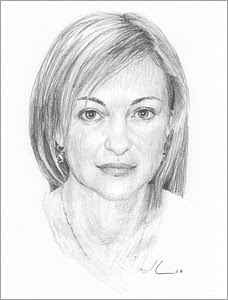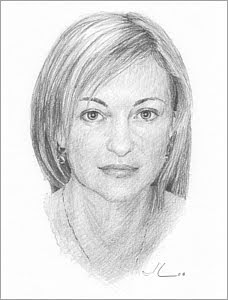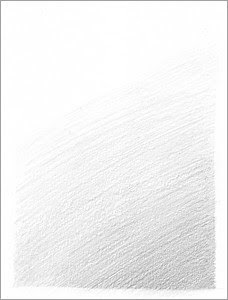
Shading a face is challenging . . . the hair, the chin, the eyes. Trickier still can be shading a face across the entire page. Let me explain.
To understand how to shade a face (or any subject for that matter) across the entire page, just answer one question. In the following example, the strongest light comes from the front-top-left. How does answering this question help you understand?
Knowing that the strongest light comes from the front-top-left tells you where the lightest part of the entire drawing is—the top left! Any point closest to the strongest light source is always brightest, even if you can’t discern that with your naked eye. And since light travels in a straight line here on earth, the side opposite that brightest spot (where the light hits your subject last) will be the darkest—the bottom right! You can see what I mean in this example, where I've shaded the paper without the face.

Now I put the two examples together. The face goes from having been shaded, to having been shaded across the entire page.

Shading across an entire page can get even trickier. For instance, what if there were more than one light source? What if there were more than one subject? And what if these subjects were different distances from the viewer? I'll be writing about these later!






